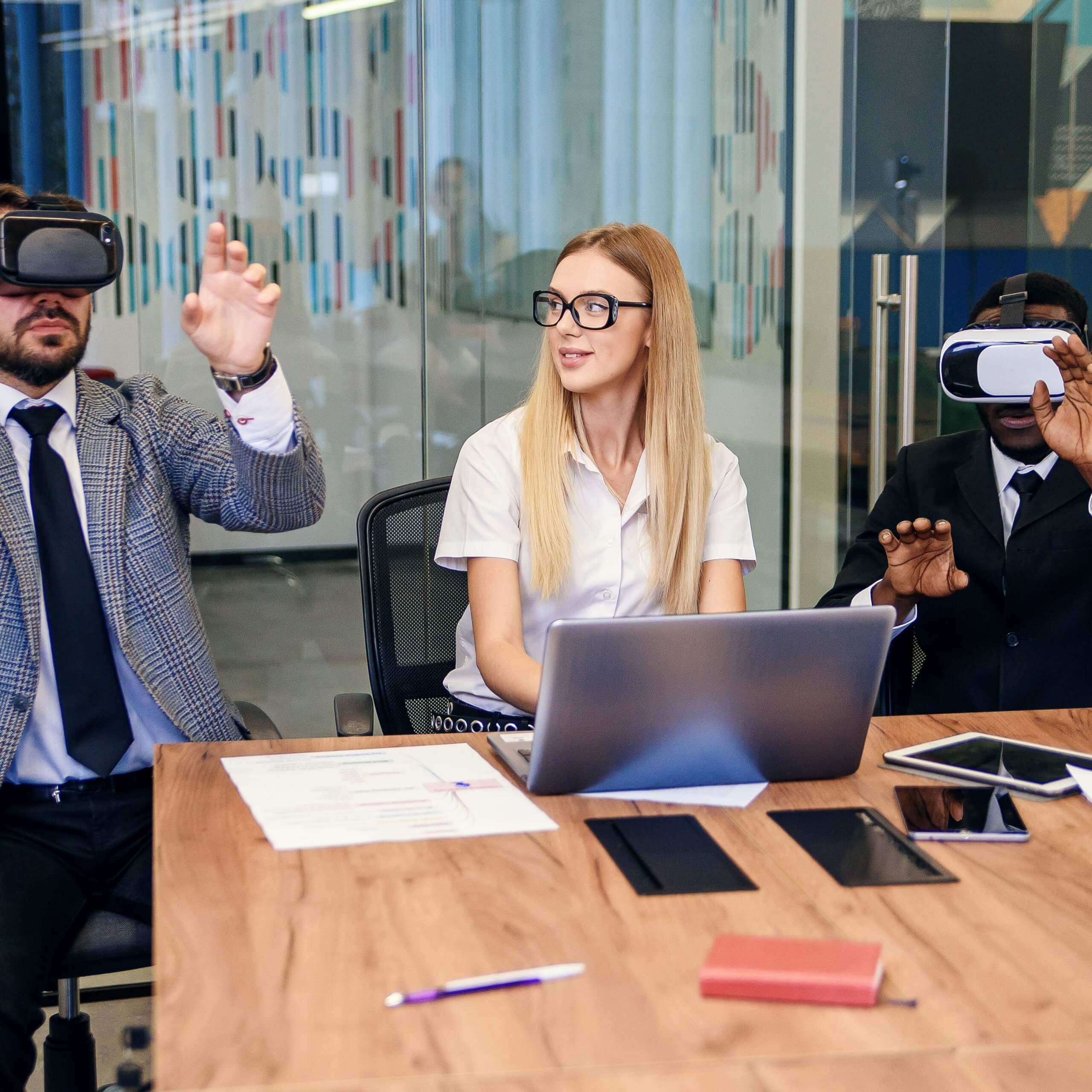The workplace has always been a place where a group of similarly dressed people in the same physical environment are conducting themselves in a professional manner. But now, with the advancements in technology, the traditional workplace has undergone a drastic transformation. As the industry began to adopt multimedia collaboration techniques, the workplace started to become more mobile. This leap in modern technological innovation is the most significant contributing factor that has increased the rates of adoption of more flexible work styles. Some advanced technologies, like Augmented Reality (AR) and Virtual Reality (VR), pave the way for yet another turning point in workplace collaboration.
The various applications of augmented reality technology were first discovered in the 1990s, but AR only gained widespread popularity in recent years. Augmented reality systems can be used in many specialized situations. For instance, augmented reality in advertising can help marketers rise the levels of emotional connections with their customers. IKEA’s AR app is a real-time example for this statement. Its capabilities range from the superimposition of digital elements onto physical realities, to a completely immersive experience that replaces sight, hearing, and even touch with a digitally created virtual reality. Phenomenal improvements in computing power, video graphics processing, artificial intelligence, and digital sensors have given birth to a multitude of new and exciting ways in which AR can facilitate augmented collaboration in the workplace.
How will augmented reality help transform workplace collaboration
Advanced AR and VR technologies have many advantages, including the potential to bridge the physical distances between colleagues who are thousands of miles away. But before we get into the benefits of AR, it is crucial to understand the difference between AR and VR. Augmented reality is when virtual objects are overlaid in a real-world environment. The users experience the real world enhanced with digital objects. Whereas VR is an entirely artificial environment in which users are fully immersed in the virtual environment. There is another technology called Mixed Reality (MR), in which the virtual environment is combined with the real world, and users can interact with both the real world and the virtual environment.
Here are some of the benefits of using Augmented Reality in the workplace:
• It lets customers test the product before purchasing it – With the use of augmented reality, organisations will be able to collaborate with customers by allowing them to visit shops and try out products virtually. For instance, an automobile retailer can enable its customers to experience a virtual and immersive test drive of the vehicles they want to buy.
• Better critical response management – AR allows a physically remote response team to provide immediate feedback in a public emergency or a hazardous situation. It minimises unnecessary risk and enables the management team to quickly assess, understand, and address the problem at hand.
• Connect with remote colleagues – Regardless of where the employees of an organization are, with the help of AR, they can be placed side by side. It allows everyone to interact naturally by bringing them together at the same virtual table. Over time, several studies have shown that a team can maximise productivity and creativity by increasing engagement.
• Remotely place experts in the field with service members – AR can be applied to field services by using AR glasses with an embedded camera. This allows a remote expert to see what the field engineer is seeing in real-time and offer advice and even overlay illustrations as guidance. This can be applied when complex situations that have not been previously encountered arise.
• Virtual prototyping and development – A project team can examine and interact with a product without having to deal with a physical prototype. Various companies create virtual reality-based prototypes in their early stages of design. Boeing uses this technology to display 3-D diagrams to help assist in the wiring of their aircrafts.
The application of virtual reality in the workplace
You might be thinking that with the many already available options for collaborative work such as desktop apps, programs, and websites, why would a team working from different geographical locations need virtual reality to work on a project. This is because VR offers many benefits beyond simple remote working.
Here are some of the key benefits of using VR in the workplace:
• Remote hiring – With the help of VR, organisations will be able to simulate in-person candidate interviews for candidate interviews. This is vital because video alone cannot capture essential things such as body language and subtle movements.
• Capture your company culture – The culture of your company is something that is very ephemeral, and clients or remote workers will not be able to see this on video. However, VR captures it with a 360 video of your company and allows remote workers to experience what your on-site team is feeling. It can make them feel like they are a part of the team.
• Transform your training and onboarding process – You can use VR to gamify the onboarding training and process. This ensures that your new candidates enjoy the learning process and remember what they learn. It can also help new hires to visualise your service map with ease.
Conclusion
There are a plethora of applications available for augmented reality and virtual reality technologies, and the most prominent tech companies are using them in ways that are most beneficial to their companies. Google, Facebook, Samsung, and Sony have their VR devices called Daydream, Oculus Rift, Gear VR, and PlayStation VR respectively. Apple has its AR development platform for iPhone and iPad called ARKit. Google also has an AR development platform called ARCore, and it has the most advanced MR capabilities. These industry leaders and their AR technologies are setting the stage for an exciting and futuristic workplace that is more mobile and flexible than any existing workplace.









